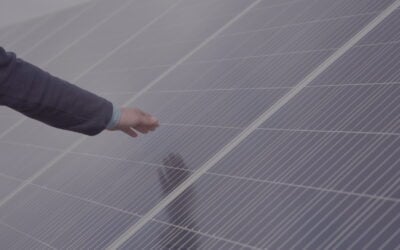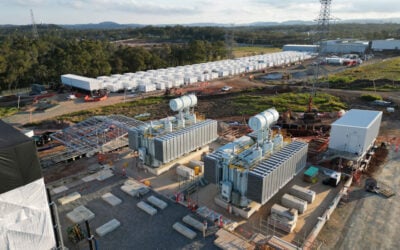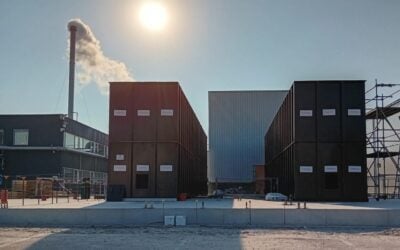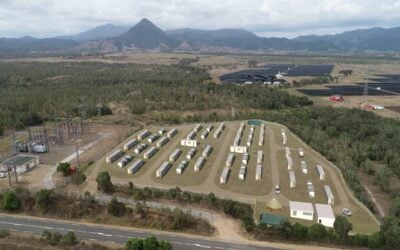
Hydrostor has secured US$55 million in funding from Export Development Canada (EDC) to advance development activities for its 200MW/1,600MWh Silver City Energy Storage Centre project in Broken Hill, New South Wales, Australia.
According to the Toronto-based long-duration energy storage (LDES) developer, the advanced compressed air energy storage (A-CAES) project will be capable of powering the entire town without a direct connection to the National Electricity Market (NEM).
It will operate as backup generation during planned or unplanned outages to prevent blackouts.
The Silver City Energy Storage Centre will provide eight hours of storage duration at full output capacity. It is designed to replace ageing diesel generators nearing end-of-life while providing crucial grid stability services to the broader network.
Try Premium for just $1
- Full premium access for the first month at only $1
- Converts to an annual rate after 30 days unless cancelled
- Cancel anytime during the trial period
Premium Benefits
- Expert industry analysis and interviews
- Digital access to PV Tech Power journal
- Exclusive event discounts
Or get the full Premium subscription right away
Or continue reading this article for free
Hydrostor’s CEO, Curtis VanWalleghem, said the EDC funding advances their Silver City project while demonstrating growing global support for long-duration energy storage, particularly their A-CAES technology.
“This financing from Export Development Canada takes Hydrostor another step closer to bringing our Silver City project to market and proves once again global momentum is growing behind long-duration energy storage technology, particularly A-CAES,” VanWalleghem said.
Supporting local renewable energy developments via A-CAES
Hydrostor’s A-CAES technology differs from traditional compressed air energy storage by eliminating the need for natural gas combustion in the generation process. The system stores energy by compressing air into purpose-built underground caverns, capturing the heat generated during compression for later use.
When electricity is needed, the compressed air is released and combined with the stored heat to drive turbines and generate power.
For Broken Hill, a remote mining community in the Far West region of New South Wales, the A-CAES project will offer improved energy security by forming the backbone of a microgrid near the town by drawing renewable energy from local developments.
It will also act as an emission-free, long-term grid reliability solution for Broken Hill and the wider region, supporting existing and new renewable energy generation and cost-effectively serving communities and mining loads.
The project received approval for the project’s Development Application by the New South Wales Department of Planning, Housing and Infrastructure in February 2025. At that time, Hydrostor indicated construction would begin later this year.
The project has also secured a Network Service Agreement with Transgrid and a Long-Term Energy Service Agreement (LTESA) from AEMO Services.
Hydrostor has another late-stage project in development: the 500MW/4,000MWh Willow Rock Energy Storage Centre in California, US. This advanced compressed air energy storage project is being led by Hydrostor subsidiary GEM A-CAES.
Earlier this year, Hydrostor secured a US$200 million investment from the Canada Growth Fund (CGF), Goldman Sachs Alternatives, and Canada Pension Plan Investment Board (CPP Investments) to support scaling its S-CAES technology.
1,600MWh battery storage project submitted to the EPBC Act
In other Australia news, a 400MW/1,600MWh battery energy storage system (BESS) project in Queensland’s Western Downs region has been submitted to the national Environment Protection and Biodiversity Conservation (EPBC) Act.
The project’s environmental review process will assess potential impacts on protected matters under the EPBC Act, including threatened species, ecological communities, and water resources.
LPRP Renewable Energy, in partnership with developer Eku Energy, is pursuing the Belah BESS, which is proposed approximately 16km south of Chinchilla.
The BESS would provide energy storage and dispatch services to the NEM while supporting grid stability, reliability, and the integration of renewable energy. Its planned operational life is at least 20 years, with the potential for this to be extended.
The development will be situated primarily on cleared agricultural land, with an underground transmission line connecting to the existing Orana Substation via the Kogan Condamine Road corridor.
Subject to regulatory approvals, construction on the BESS is expected to commence in September 2026 and generate up to 150 construction jobs. It will also create five operational roles and indirectly benefit local suppliers and service providers.
Our publisher, Solar Media, will host the Energy Storage Summit Asia 2025 on 7-8 October 2025 in Manila, the Philippines. You can receive 20% off your ticket using the code ESN20 at checkout.





